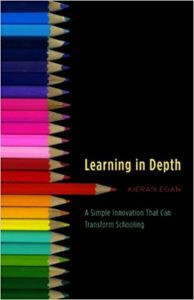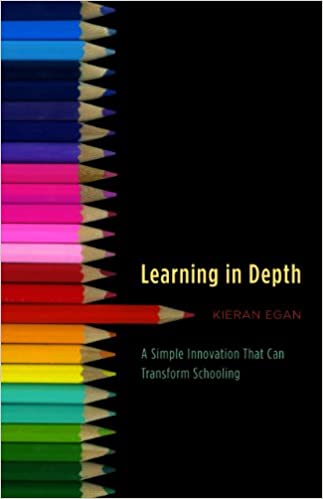 During the reading of Egan’s book, “Learning in Depth”, I was encouraged and affirmed by the overview of Cognitive Tools in Chapter 5. It was the connection I needed to understand the value and even necessity of finding emotional significance within a topic in order for learning to go deep. At the same time, I was experiencing this practically in my classroom. Our inquiry of living things became a flexible journey around the somatic and mythic frameworks. As collaborative learners, we discovered connections and experienced a desire to reach further into our understandings of the natural world around us.
During the reading of Egan’s book, “Learning in Depth”, I was encouraged and affirmed by the overview of Cognitive Tools in Chapter 5. It was the connection I needed to understand the value and even necessity of finding emotional significance within a topic in order for learning to go deep. At the same time, I was experiencing this practically in my classroom. Our inquiry of living things became a flexible journey around the somatic and mythic frameworks. As collaborative learners, we discovered connections and experienced a desire to reach further into our understandings of the natural world around us.
During this exploration, I noticed a need for my students to become more independent and self-directed. I realized that at the ages of 5-7, there is a need for scaffolding and teaching skills to engage in the inquiry process and use cognitive tools successfully. Presently, I am working towards developing a resource of age-appropriate tools/skills that will facilitate effective inquiry and use of cognitive tools in my classroom. This term, I introduced an iPad App called “Seesaw” that gave my students a format to represent and share their observations of plant growth. I see the value of cooperative learning and collaboration in enhancing the effectiveness of cognitive tools. Because of this, I am more consistently modelling these competencies and providing opportunities for my students to impart and exchange information. In all of this, I continue to strive to find a balance between creating an environment that is student-lead, teacher facilitated and/or teacher lead. As an early years educator, I take seriously my contribution in setting the groundwork for instilling positive, life-long learning attitudes in my students.
